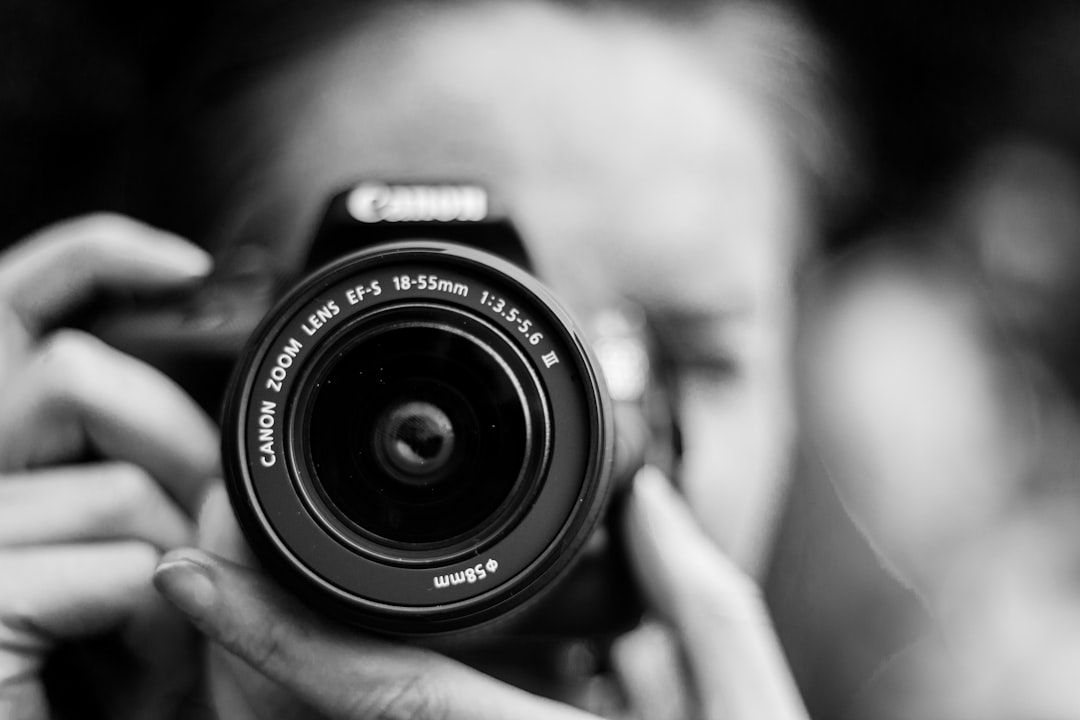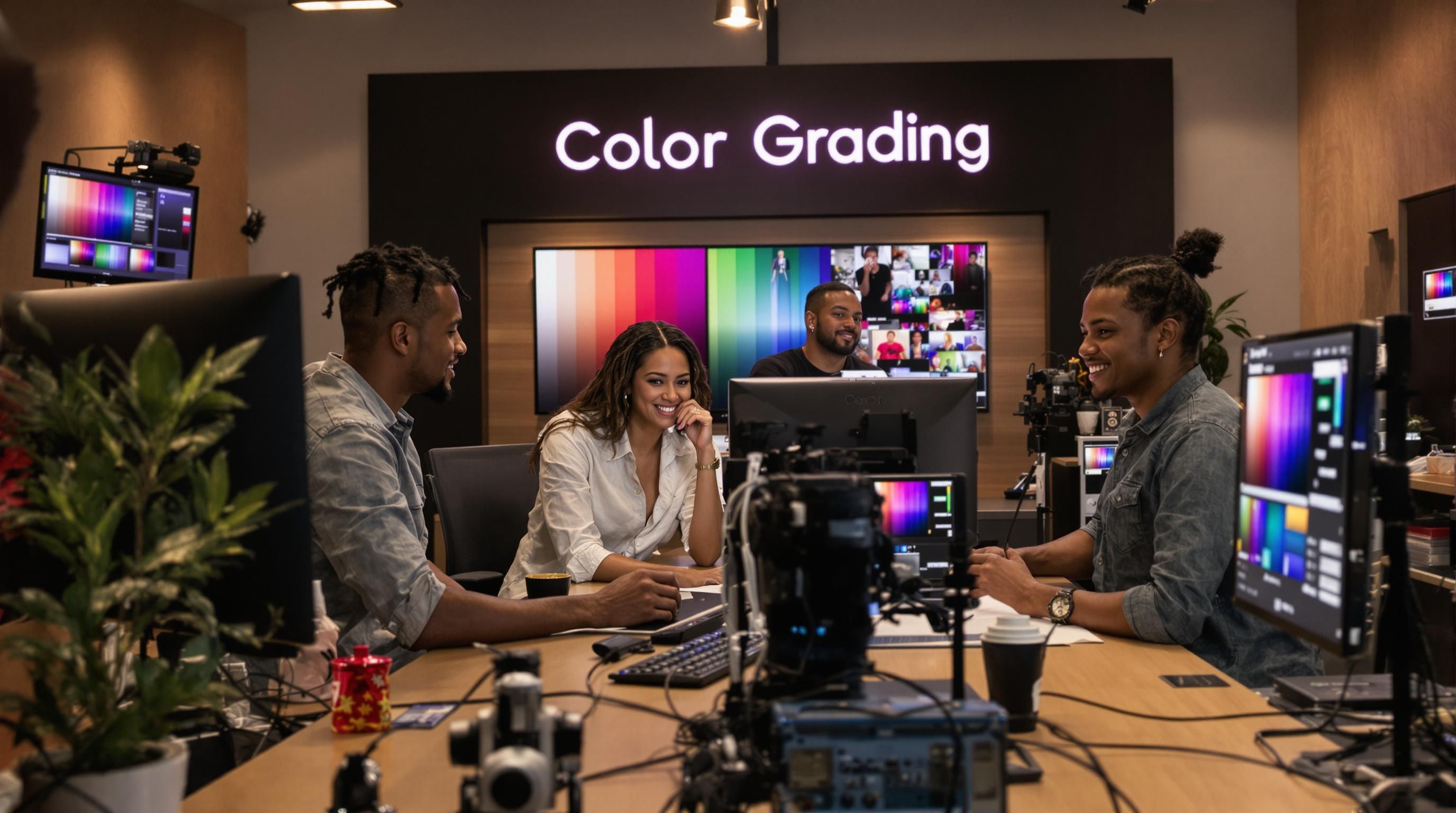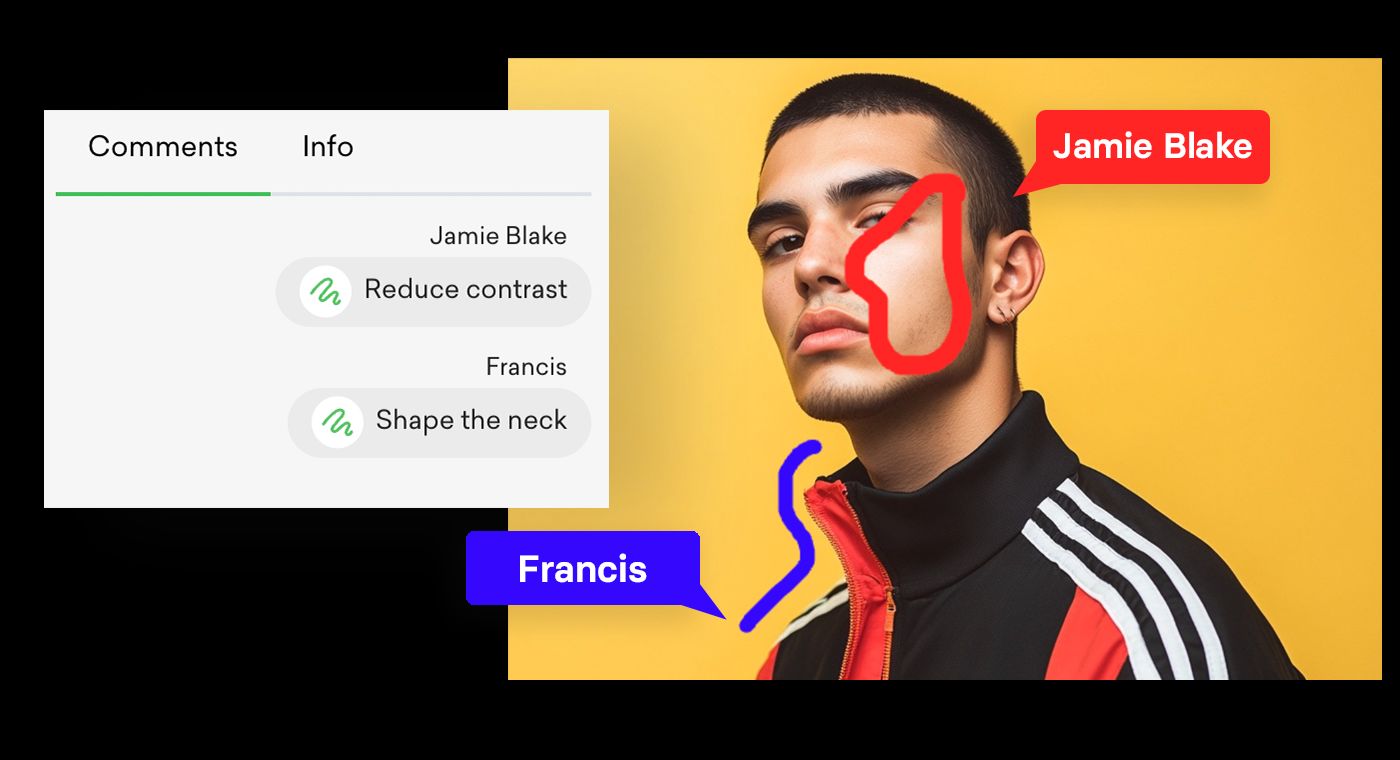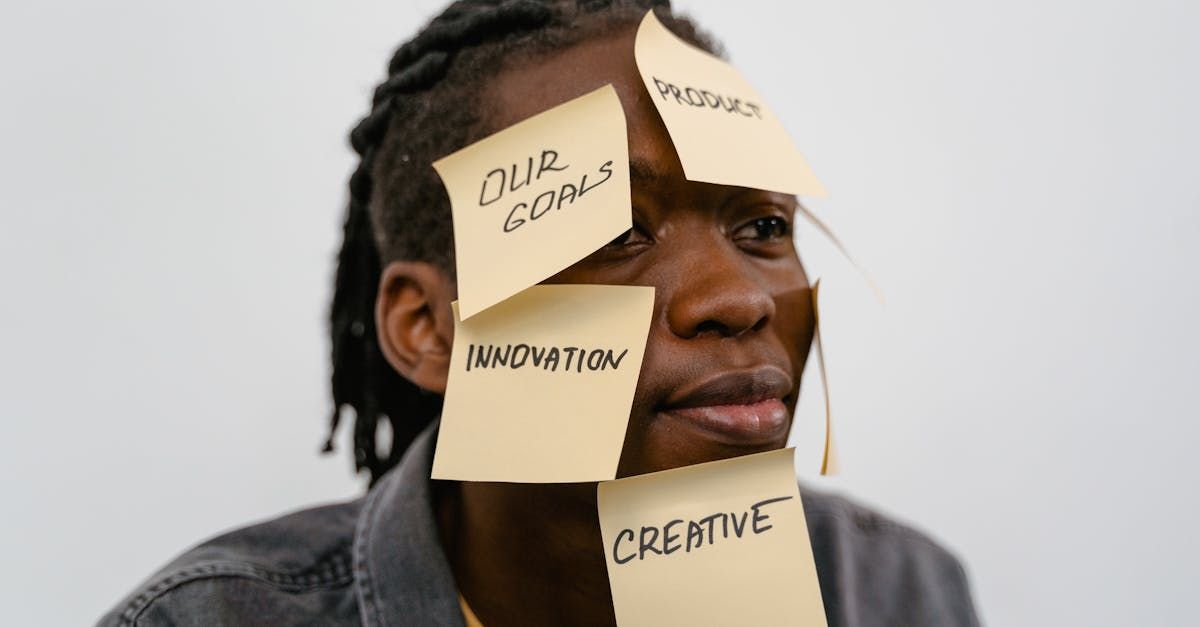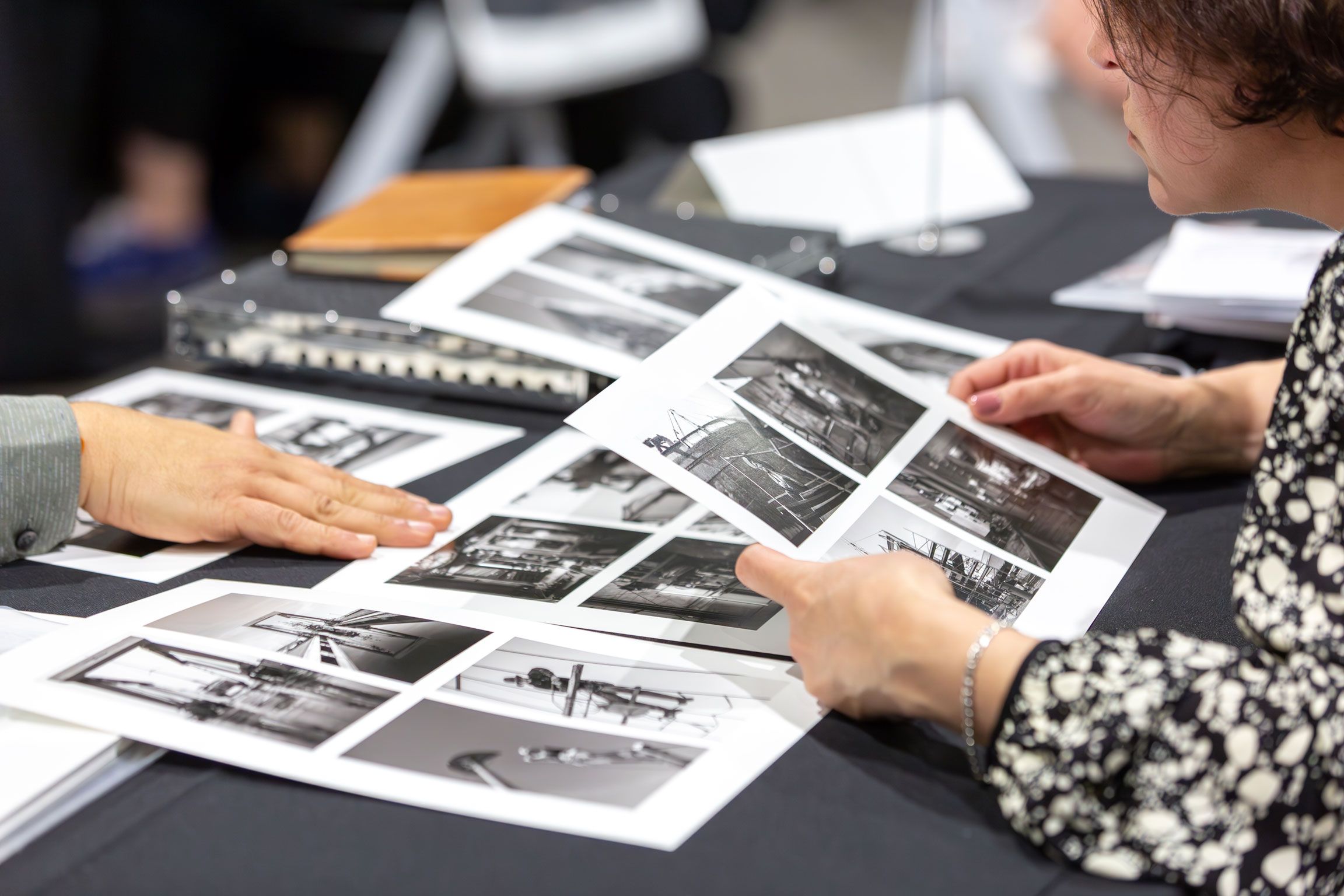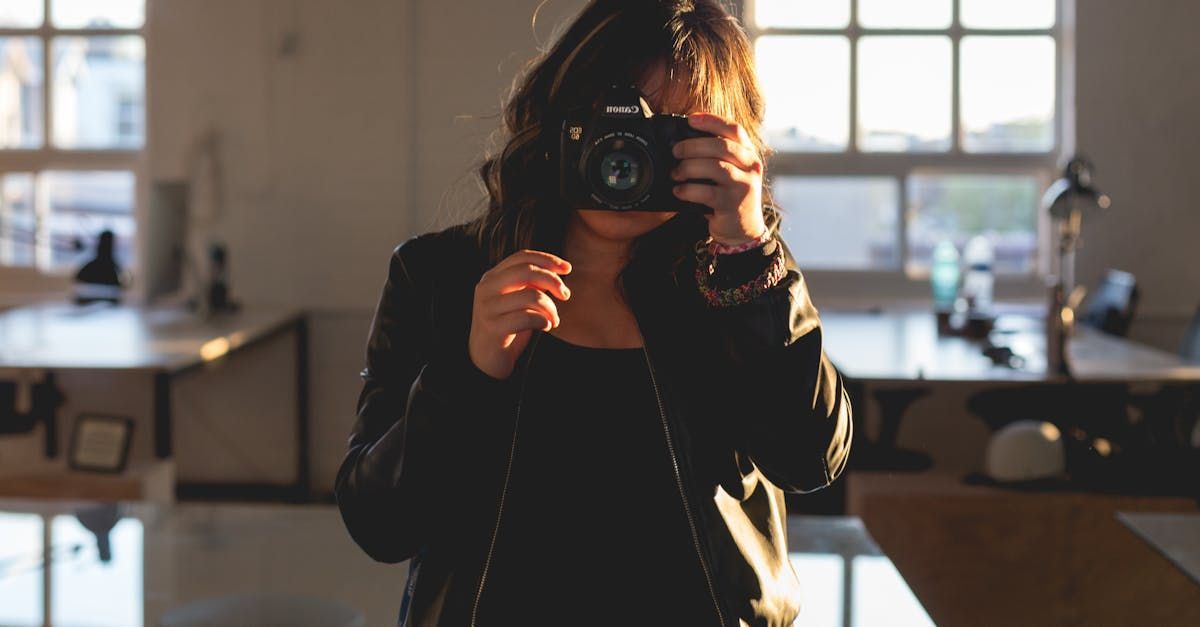Photo editing software can turn an ordinary snapshot into a work of art, reshaping the way we see the world. Here is the twist. A 2024 study flagged 378 separate ethical concerns with image manipulation, more than ever before in creative work. It is not the technology that poses the biggest challenge now, but how creatives are expected to balance authenticity and trust as industry standards evolve for 2025.
Table of Contents
Quick Summary
| Takeaway | Explanation |
| Transparency is Crucial | Creative professionals should disclose the extent of image manipulation to maintain trust with their audience. |
| Ethical Editing Requires Consent | Photographers and designers must obtain permission from subjects for significant alterations to ensure respect and authenticity. |
| Professional Standards Are Evolving | Industry guidelines aim to establish clear ethical boundaries, emphasizing authenticity, transparency, and inclusivity in photo editing practices. |
| Recognize Audience Impact | Editing practices should prioritize audience psychological well-being and emotional responses, shaping responsible visual storytelling. |
| Embrace Ethical Frameworks | Adopting comprehensive guidelines fosters a holistic approach to visual communication, balancing creativity with social responsibility. |
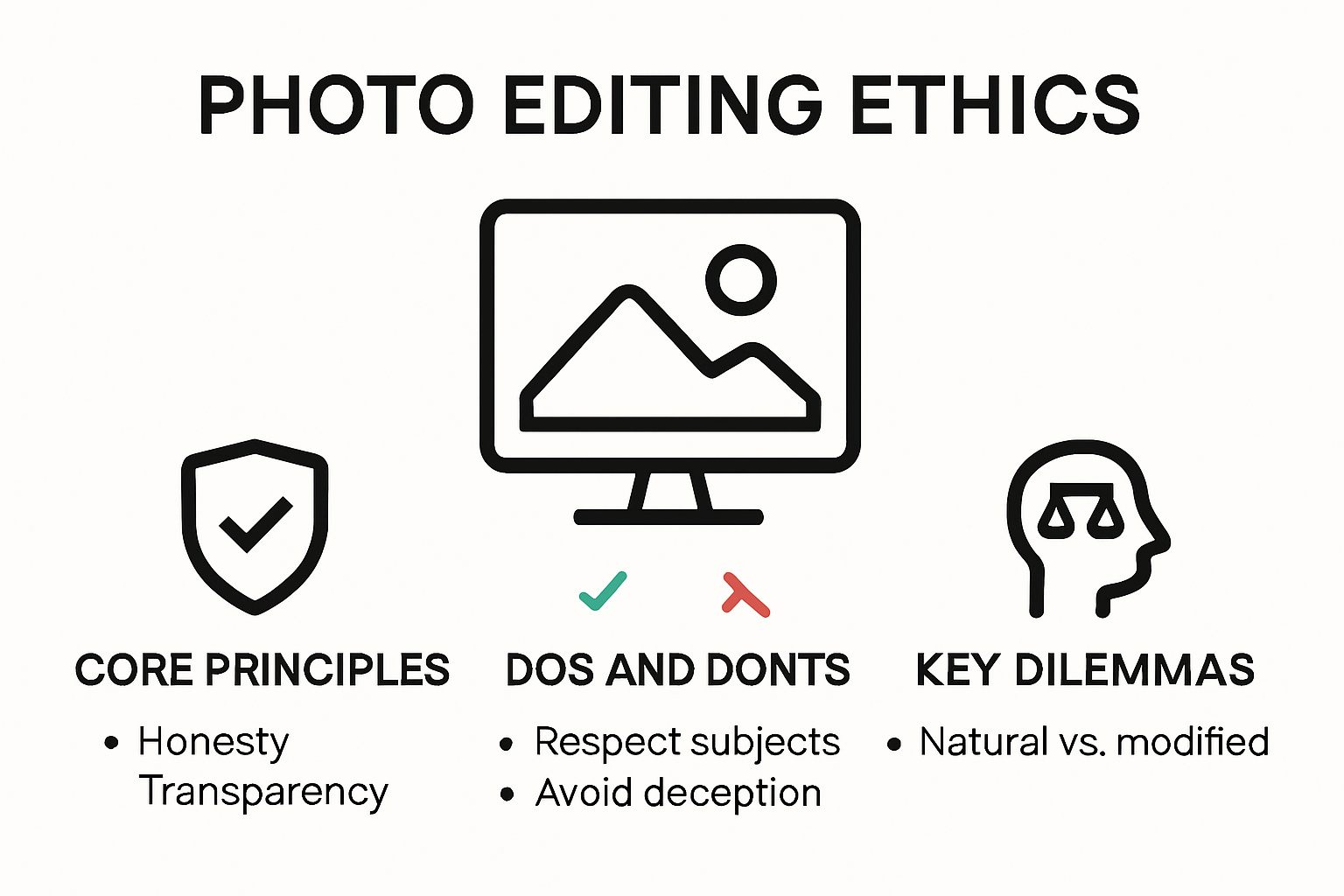
Understanding Photo Editing Ethics Today
Photo editing ethics represent a critical intersection between creative expression and professional responsibility in the visual media landscape. As digital manipulation technologies continue to advance, creative professionals face increasingly complex challenges in maintaining authenticity and transparency in their visual storytelling.
The Evolving Landscape of Image Manipulation
Modern photo editing goes far beyond simple color correction or exposure adjustments. According to the Visual Resources Center at the University of Chicago, photographers and designers must carefully consider how even minor image modifications can fundamentally alter viewer perception and meaning. This ethical dilemma becomes particularly pronounced in fields like journalism, documentary photography, and marketing, where image representation carries significant communicative weight.
Key Ethical Considerations:
-
Transparency: Clearly disclosing the extent of image manipulation
-
Consent: Ensuring subjects understand and agree to potential image modifications
-
Authenticity: Maintaining the core narrative integrity of the original image
Cultural and Professional Responsibilities
Ohio University’s guidelines on ethical photography emphasize that image editing should never exploit or misrepresent people, cultures, or environments. This principle demands that creative professionals approach photo manipulation with a profound sense of respect and cultural sensitivity. Professional photo editors must recognize that their work doesn’t exist in a vacuum but contributes to broader visual narratives that can shape public understanding.
The ethical framework for photo editing extends beyond technical capabilities. It requires a nuanced understanding of visual communication, cultural context, and the potential societal impact of manipulated imagery. Photographers and designers must continually ask themselves critical questions: Does this edit preserve the fundamental truth of the moment? Am I representing subjects with dignity and respect? Would my modifications mislead or potentially harm the subjects or viewers?
Professional Standards and Accountability
As technology makes increasingly sophisticated image manipulation possible, professional organizations and industry standards are developing more robust ethical guidelines. These frameworks aim to establish clear boundaries between acceptable creative enhancement and potentially deceptive manipulation. Creative professionals are increasingly expected to document their editing processes, provide clear disclosures about image modifications, and maintain a commitment to visual integrity.
Ethical photo editing is not about restricting creativity but about fostering a responsible approach to visual storytelling. It requires a delicate balance between artistic expression and truthful representation, demanding both technical skill and moral judgment from creative professionals.
By embracing these ethical principles, photographers and designers can create compelling visual narratives that respect both their subjects and their audience, ultimately elevating the entire field of visual communication.
Common Ethical Dilemmas in Creative Work
Creative professionals navigate a complex landscape of ethical challenges that extend far beyond simple technical considerations. These dilemmas challenge the fundamental boundaries between artistic expression and professional integrity, demanding careful reflection and nuanced decision making.
The Blurred Lines of Image Manipulation
A comprehensive 2024 study on generative AI ethics identified 378 normative issues across multiple domains, highlighting the intricate ethical terrain creative professionals must traverse. In photo editing, this complexity manifests through numerous challenging scenarios that test professional judgment.
Professionals frequently encounter situations where the line between enhancement and misrepresentation becomes dangerously thin. Key ethical challenges include:
-
Representation Accuracy: Ensuring images truthfully reflect original scenes
-
Subject Consent: Obtaining permission for significant image modifications
-
Cultural Sensitivity: Respecting diverse perspectives in visual storytelling

Technological Challenges and Moral Responsibilities
Al Jazeera Media Institute warns that manipulated images can erode public trust, particularly in media contexts. This underscores the critical importance of maintaining authenticity. Creative professionals must recognize that each edit carries potential consequences beyond aesthetic improvements.
Advanced editing technologies like AI and machine learning introduce unprecedented ethical complications. These tools can generate hyper realistic modifications that blur the boundaries between documentation and fabrication. Professionals must continuously evaluate whether technological capabilities align with ethical standards.
Navigating Professional Integrity
The University of Chicago’s Visual Resources Center emphasizes that ethical image editing requires ongoing critical assessment. Professionals must consistently ask fundamental questions: Does this modification serve truth? Will it potentially mislead viewers? Are we preserving the core narrative integrity?
Effective ethical practice involves establishing clear personal and professional guidelines. This means developing robust workflows that prioritize transparency, respect for subjects, and commitment to visual authenticity. Documentation of editing processes, clear disclosures about modifications, and maintaining open communication with clients and subjects become essential strategies.
Creative professionals are not just technical practitioners but visual storytellers with significant societal responsibilities. Their work shapes perceptions, communicates complex narratives, and influences collective understanding. By embracing rigorous ethical standards, they can leverage technological capabilities while maintaining the highest levels of professional integrity.
To better illustrate the main types of ethical challenges creatives face during photo editing, the following table summarizes critical dilemmas and their focus:
| Ethical Dilemma | Key Focus |
| Representation Accuracy | Truthful depiction of the original scene |
| Subject Consent | Permission from individuals for major modifications |
| Cultural Sensitivity | Respect for diverse perspectives and communities |
| Audience Trust | Maintaining credibility and avoiding deception |
| Technical Manipulation Limits | Determining acceptable scope of edits |
| Transparency | Disclosure of significant changes |
Building Audience Trust Through Ethical Edits
Trust represents the foundational currency of visual communication. Creative professionals must recognize that audience perception depends not just on aesthetic quality but on perceived authenticity and transparency in image creation and manipulation.
Psychological Impact of Visual Transparency
A 2023 study in BMC Psychology revealed profound psychological implications of photo editing, demonstrating how manipulated images can significantly impact audience self-perception and emotional responses. This research underscores the critical need for responsible editing practices that prioritize audience psychological well-being.
Key Trust-Building Strategies:
-
Consistent Disclosure: Openly communicate editing processes
-
Minimal Manipulation: Preserve core image authenticity
-
Contextual Editing: Ensure modifications serve narrative purpose
Provenance and Media Credibility
Research examining media provenance indicates that providing transparent information about image origins and modifications can paradoxically increase audience skepticism. This suggests creative professionals must craft nuanced approaches to transparency that balance detailed explanation with clear, digestible communication.
Conservation research published in People and Nature further emphasized how audiences develop deep mistrust when perceiving manipulated visual content. Professionals must recognize that each edit carries potential credibility risks, demanding careful consideration of both aesthetic and ethical dimensions.
Establishing Ethical Visual Communication
Building audience trust requires more than technical skill. It demands a comprehensive approach that treats visual storytelling as a collaborative dialogue. Creative professionals must view their work through the lens of audience experience, understanding that each image represents a promise of authenticity.
Effective trust-building involves developing clear internal guidelines for acceptable image modifications. This might include establishing maximum acceptable adjustment ranges, documenting editing processes, and creating transparent communication protocols about image transformations.
Audience trust is not a static achievement but an ongoing commitment. By consistently demonstrating respect for visual truth, maintaining technical integrity, and prioritizing subject and viewer perspectives, creative professionals can cultivate meaningful connections that transcend mere visual consumption.
Ultimately, ethical editing is about preserving the fundamental human narrative embedded within each image. It requires compassion, technical precision, and an unwavering commitment to representing reality with dignity and nuance.
Industry Standards and Guidelines for 2025
The rapidly evolving digital landscape demands robust and adaptive industry standards that can effectively navigate the complex ethical terrain of photo editing. As technological capabilities expand, professional organizations are developing comprehensive guidelines to ensure responsible creative practices.
Global Professional Frameworks
World Press Photo’s 2025 Contest Code of Ethics establishes a critical benchmark for professional image creation, mandating that photographers and editors ensure fair and authentic representation of stories and subjects. These guidelines represent a significant shift towards more transparent and accountable visual storytelling.
Core Ethical Standards:
-
Authenticity: Maintaining original image integrity
-
Transparency: Documenting substantial editing processes
-
Accessibility: Ensuring visual content is universally comprehensible
The following table provides a comparison of industry standards and ethical codes referenced in the article, highlighting their primary focus areas:
| Organization / Standard | Main Ethical Focus Areas | Example Guidelines/Requirements |
| World Press Photo Contest Code of Ethics | Authenticity, transparency, accessibility | Fair representation, disclosure of substantive edits |
| U.S. Dept. of Energy Graphics/Image Standards | Technical compliance, accessibility | Color contrast, alt text, image resolution, Section 508 |
| American Society of Business Publication Editors (ASBPE) Code | Trust, transparency, reader protection | No misleading edits, required disclosure of changes |
Technical and Accessibility Requirements
The Department of Energy’s Graphics and Image Standards introduces comprehensive technical guidelines that extend beyond aesthetic considerations. These standards mandate compliance with Section 508 accessibility requirements, ensuring that visual content remains inclusive and comprehensible across diverse user experiences.
Key technical standards include precise specifications for:
-
Color contrast ratios
-
Alternative text descriptions
-
Image resolution and compatibility
-
Cross platform visual consistency
Professional Code of Conduct
The American Society of Business Publication Editors provides nuanced ethical guidelines that emphasize the critical importance of maintaining reader trust. Their recommendations highlight that image modifications should never mislead viewers, and any significant alterations must be transparently communicated.
Professional organizations are increasingly recognizing that ethical photo editing transcends technical manipulation. It represents a holistic approach to visual communication that considers psychological, cultural, and representational implications. Emerging guidelines reflect a sophisticated understanding that images are not merely visual artifacts but powerful communication tools with profound societal impact.
Adopting these comprehensive standards requires ongoing education, self reflection, and a commitment to professional growth. Creative professionals must view these guidelines not as restrictive regulations but as dynamic frameworks that support more thoughtful, responsible visual storytelling.
As we move into 2025, the most successful creative professionals will be those who can seamlessly integrate technological capability with ethical consciousness. These industry standards provide a roadmap for navigating the complex intersection of creativity, technology, and social responsibility.
Frequently Asked Questions
What are the main ethical principles in photo editing for 2025?
Transparency, consent, and authenticity are the main ethical principles. Creatives should disclose the extent of image manipulation, obtain permission for significant changes, and maintain the original narrative integrity of the image.
How do cultural sensitivities affect photo editing ethics?
Cultural sensitivities emphasize the need for respect and representation in visual storytelling. Creative professionals must ensure that their edits do not exploit or misrepresent individuals, cultures, or communities.
Why is transparency important in photo editing?
Transparency is crucial because it builds trust with the audience. Creatives should communicate the extent of edits made to an image so viewers can accurately interpret its context and meaning.
What resources are available for learning photography ethics?
There are numerous resources available, including the World Press Photo’s Code of Ethics, guidelines from professional photography organizations, and academic studies examining ethical considerations in image manipulation.
Elevate Your Ethical Workflow and Audience Trust with Pikd
Modern creatives face immense pressure to deliver high-impact visuals while honoring ethical standards like transparency, consent, and authenticity. The article emphasizes how vital it is to keep client trust by documenting edits, maintaining open feedback loops, and always putting visual integrity first. If you struggle with messy file transfers, scattered approvals, or unclear edit trails, you know these problems can undermine both your professionalism and your ethical commitment.

Start building a reputation for responsible and efficient creative collaboration. Pikd gives you a seamless visual-first platform where you can organize your work, track every edit, and get real-time comments—all in branded galleries designed for transparency and clarity. Give your clients confidence in your methods and your results. Explore Pikd now and experience a smoother, more ethical workflow from the first upload to the final delivery. Your clients and your reputation deserve this upgrade.


